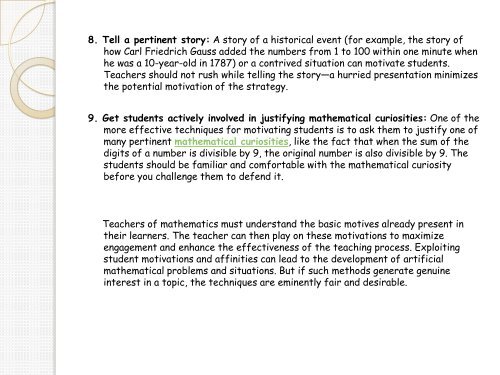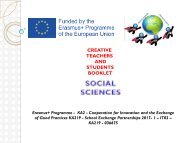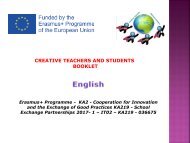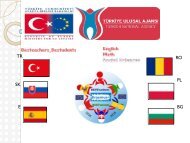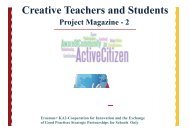besteachers,bestudents-math
You also want an ePaper? Increase the reach of your titles
YUMPU automatically turns print PDFs into web optimized ePapers that Google loves.
8. Tell a pertinent story: A story of a historical event (for example, the story of<br />
how Carl Friedrich Gauss added the numbers from 1 to 100 within one minute when<br />
he was a 10-year-old in 1787) or a contrived situation can motivate students.<br />
Teachers should not rush while telling the story—a hurried presentation minimizes<br />
the potential motivation of the strategy.<br />
9. Get students actively involved in justifying <strong>math</strong>ematical curiosities: One of the<br />
more effective techniques for motivating students is to ask them to justify one of<br />
many pertinent <strong>math</strong>ematical curiosities, like the fact that when the sum of the<br />
digits of a number is divisible by 9, the original number is also divisible by 9. The<br />
students should be familiar and comfortable with the <strong>math</strong>ematical curiosity<br />
before you challenge them to defend it.<br />
Teachers of <strong>math</strong>ematics must understand the basic motives already present in<br />
their learners. The teacher can then play on these motivations to maximize<br />
engagement and enhance the effectiveness of the teaching process. Exploiting<br />
student motivations and affinities can lead to the development of artificial<br />
<strong>math</strong>ematical problems and situations. But if such methods generate genuine<br />
interest in a topic, the techniques are eminently fair and desirable.


